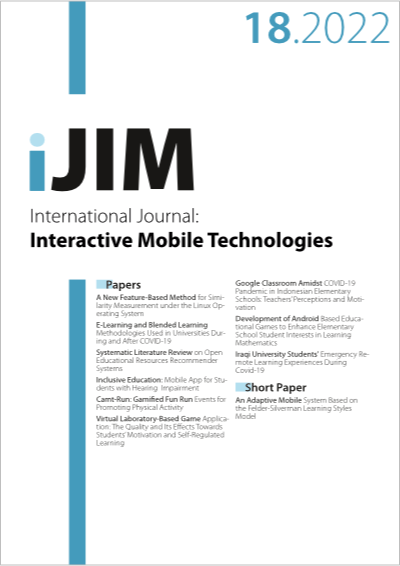Inclusive Education: Mobile App for Students with Hearing Impairment
DOI:
https://doi.org/10.3991/ijim.v16i18.33857Keywords:
cascade methodology, hearing impairment, mobile application, educational inclusionAbstract
Currently in Latin America hearing impairment is one of the main problems of society, especially in Peru, where there is a large percentage of hearing-impaired children without receiving some kind of adequate and viable education for their growth, being the main reason the little support by the government and the lack of technological tools to support inclusive education. For this reason, the present research work is generated, which has as main motive to support and help the benefit of educational inclusion and even better technological development for fundamental problems in society, especially those that affect the educational life. Therefore, the development of a mobile application aimed at educational inclusion for students, whether or not they are hearing impaired, was proposed. Therefore, a form was applied to 40 people, including parents of hearing-impaired students and teachers, in order to collect main requirements. In addition, the cascade methodology was used, being the most appropriate for the development of the mobile application, providing agility of development by having clear and precise requirements. Finally, it was concluded that the mobile application will generate different adequate and viable benefits for an inclusive educational environment for students with hearing impairment, through the development of a form established and directed to 50 people, among them the 40 people of the first form and 10 people specialized in the development and design of mobile applications.
Downloads
Published
How to Cite
Issue
Section
License
Copyright (c) 2022 Alejandro Boza-Chua, Laberiano Andrade-Arenas

This work is licensed under a Creative Commons Attribution 4.0 International License.



